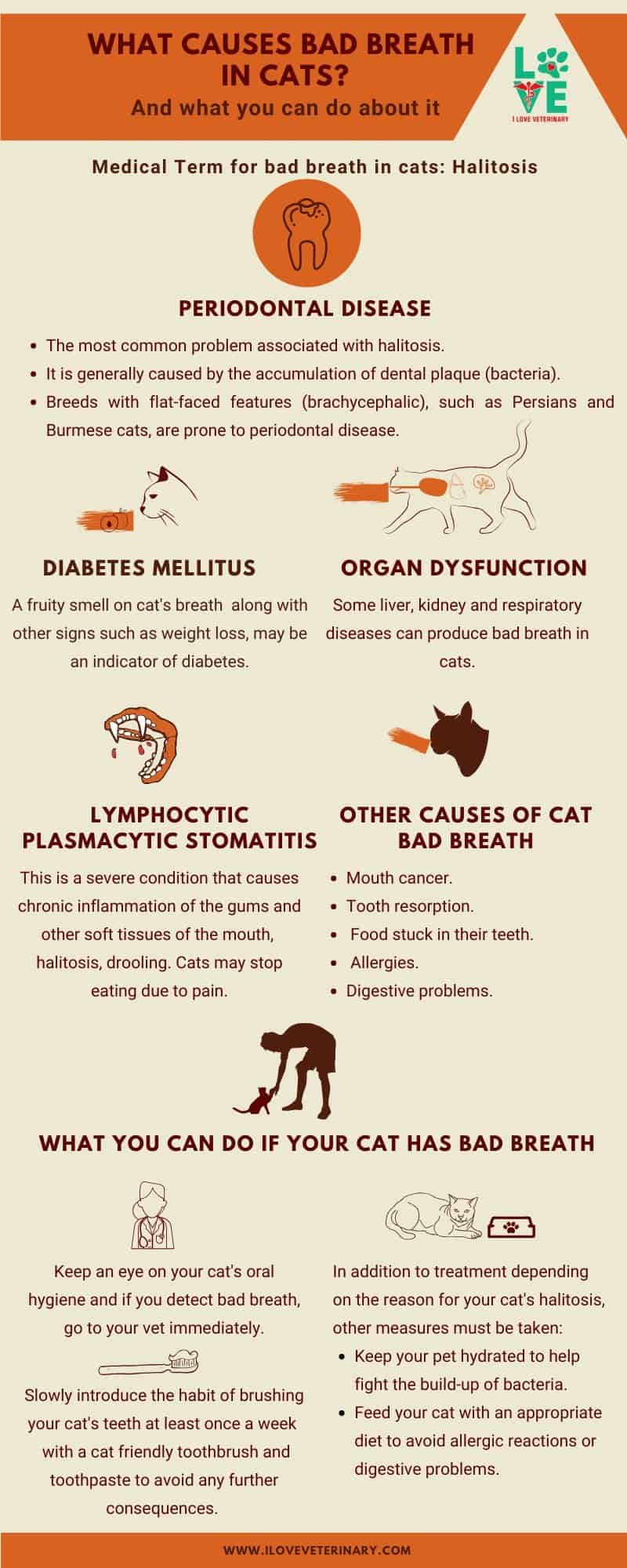Medical Term for bad breath in cats: Halitosis
Periodontal Disease
- The most common problem associated with halitosis.
- It is generally caused by the accumulation of dental plaque (bacteria).
- Breeds with flat-faced features (brachycephalic), such as Persians and Burmese cats, are prone to periodontal disease.
Diabetes Mellitus
A fruity smell on cat’s breath along with other signs such as weight loss, may be an indicator of diabetes.
Organ Dysfunction
Some liver, kidney and respiratory diseases can produce bad breath in cats.
Lymphocytic plasmacytic stomatitis
This is a severe condition that causes chronic inflammation of the gums and other soft tissues of the mouth, halitosis, drooling. Cats may stop eating due to pain.
Other causes of bad breath
- Mouth cancer.
- Tooth resorption.
- Food stuck in their teeth.
- Allergies.
- Digestive problems.
What you can do if your cat has bad breath
- Keep an eye on your cat’s oral hygiene and if you detect bad breath, go to your vet immediately
- Slowly introduce the habit of brushing your cat’s teeth at least once a week with a cat friendly toothbrush and toothpaste to avoid any further consequences.
- In addition to treatment depending on the reason for your cat’s halitosis, other measures must be taken: Keep your pet hydrated to help fight the build-up of bacteria and feed your cat with an appropriate diet to avoid allergic reactions or digestive problems.
Infographic created by Arais Conde, find out more about her by visiting her Instagram or Portfolio.

